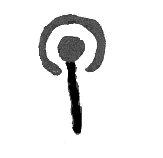View PDF
| Canmore ID |
18367 |
SCRAP ID |
49 |
| Location OS Grid Ref: |
NJ 61000 44900
|
Team |
Not in team
|
|
Existing Classifications
|
| Classification |
Period |
| CUP AND RING MARKED STONE |
PREHISTORIC |
|
| Date Fieldwork Started |
10/03/2020 |
Date Fieldwork Completed |
|
| New Panel? |
No |
|
A1. Identifiers
| Panel Name |
BURN OF FORGUE |
Number |
|
| Other names |
Forgue |
| HER/SMR |
NJ64SW0003
|
SM Number |
|
Other |
|
Classifications And Periods
| Classification 1 |
Cup And Ring Marked Stone |
Period 1 |
Neol/bronze Age |
County
ABERDEENSHIRE
A2. Grid Reference(original find site)
| OS NGR |
NJ |
61000 |
44900 |
| New OS NGR |
|
|
|
| Lat/Long |
57.49263 |
-2.65225 |
| Obtained By: |
Map
|
A3. Current Location & Provenance
| Located |
- Moved from original location
- In museum
- From donation
|
| Museum/Collection |
National Museums Scotland |
| Accession no. |
X.IA 24 |
B1. Landscape Context
| Weather |
|
| Position in landscape |
|
| Topography(terrain within about 500m of panel.) |
|
| Aspect of slope (if on sloping terrain e.g. S, SE etc.) |
|
B2. Current land use & vegetation
B3. Forestry
B4. Archaeological Features within 200m / or visible from the panel
B5. Location Notes
No notes added
Previous Notes
"NJ64SW 3 c. 610 449.
A cup-marked stone, being a boulder of greyish gneissose rock, 20" by 12", having nine cups on one side, six of which have encircling rings, found in a burn on the Glebe at Forgue, was donated to the National Museum of Antiquites of Scotland (NMAS) in 1895 by the Rev J Brebner. (Accession no: IA 24)
Proc Soc Antiq Scot 1896.
The burn referred to is undoubtedly the Burn of Forgue, at the edge of the glebeland at NJ 610 449. Otherwise no further information.
Visited by OS (AA) 5 March 1973."
NJ64SW 3 c. 610 449.
A cup-marked stone, being a boulder of greyish gneissose rock, 20" by 12", having nine cups on one side, six of which have encircling rings, found in a burn on the Glebe at Forgue, was donated to the National Museum of Antiquites of Scotland (NMAS) in 1895 by the Rev J Brebner. (Accession no: IA 24)
Proc Soc Antiq Scot 1896.
The burn referred to is undoubtedly the Burn of Forgue, at the edge of the glebeland at NJ 610 449. Otherwise no further information.
Visited by OS (AA) 5 March 1973.
C1. Panel Type
| In the landscape |
Boulder/Slab |
|
C2. Panel Dimensions, Slope & Orientation
Dimensions of panel (m to one decimal place)
| Length (longer axis) |
0.5 |
Width |
0.3 |
| Height (max) |
0.2 |
Height (min) |
0.1 |
Approximate slope of carved surface
Orientation (Aspect e.g. NW)
| Rock Surface |
|
Carved Surface |
|
Carved Surface |
|
C3. Rock Surface
| Surface Compactness |
Hard
|
Grain Size |
Coarse
|
Visible Anomalies |
Not Visible
|
Rock Type |
Igneous rock
|
C4. Surface Features
C5. Panel Notes
This is a small, rounded boulder (probable erratic) of igneous rock, measuring 0.5 x 0.3 x 0.2 m, now in the National Museums Scotland Collection Centre (accession no. X.IA 24). The rock is hard and coarse, with no obvious inclusions but some natural cracks around the edges of the carved surface. The carvings are regular, well-made and well-defined due to the hardness of the rock and their good preservation. There are 9 motifs which include 2 simple cups, 1 cup with a radial, 2 cups with single rings, 1 cup with single ring and radial, and 3 cups with possible keyhole and radial motifs.
C6. Probability
The probability that there is any rock art on the panel is
Definite
Comments
No comments added
C7. MOTIFS
Cupmark

|

|
|
2
|
1
|
Cup and Rings

|

|
|
2
|
1
|
Keyhole

|
|
3
|
Visible Tool Marks? Yes
Visible Peck Marks? No
D1. Access
- Access is managed by a national organisation.
D2. Awareness
- Panel was known before the project.
There are stories or folk traditions associated with this panel No
D3. Risk
Natural
Animal
Human
Comments and other potential threats
In Museum Collection




